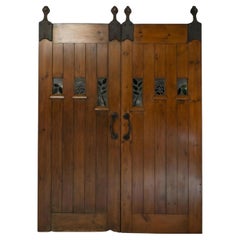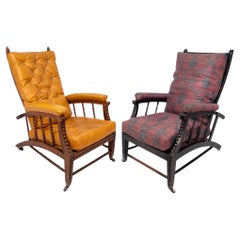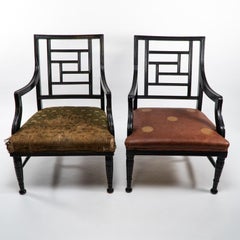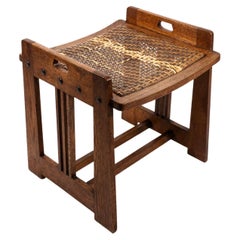About Puritan Values
Tony Geering is the passionate owner of Puritan Values Antique Dealer, Curator, Historian & Interior Designer, specialising for over 35 years in the British Arts & Crafts Movement, Gothic Revival, Anglo-Japanese & Aesthetic Movements, Art Nouveau, Architectural Antiques, Mid Century Modern Design. A renowned specialist studying Art Furniture, Period Lighting, Metalwork, Decorative Objects & Important Works of Art from the power house of the mid Victorian period through to the Scandinavian design excellence that exploded post war. Tony also regularly appears on British te...Read More
Established in 19891stDibs seller since 2016
VAT ID
GB837432813
Featured Pieces
Antique 1890s English Arts and Crafts Doors and Gates
Iron
Antique 1870s English Aesthetic Movement Lounge Chairs
Oak, Walnut
Antique 19th Century British Anglo-Japanese Armchairs
Walnut
20th Century British Stools
Cane, Oak
20th Century British Decorative Dishes and Vide-Poche
Silver Plate
Antique 19th Century Aesthetic Movement Wall Mirrors
Walnut
20th Century Arts and Crafts Fireplace Tools and Chimney Pots
Brass
Antique 19th Century Arts and Crafts Armchairs
Oak
20th Century Arts and Crafts Bookcases
Oak
20th Century Arts and Crafts Desks
Oak
Antique 19th Century Arts and Crafts Dining Room Chairs
Oak
Antique 19th Century Arts and Crafts Dining Room Chairs
Leather, Oak
More About Puritan Values
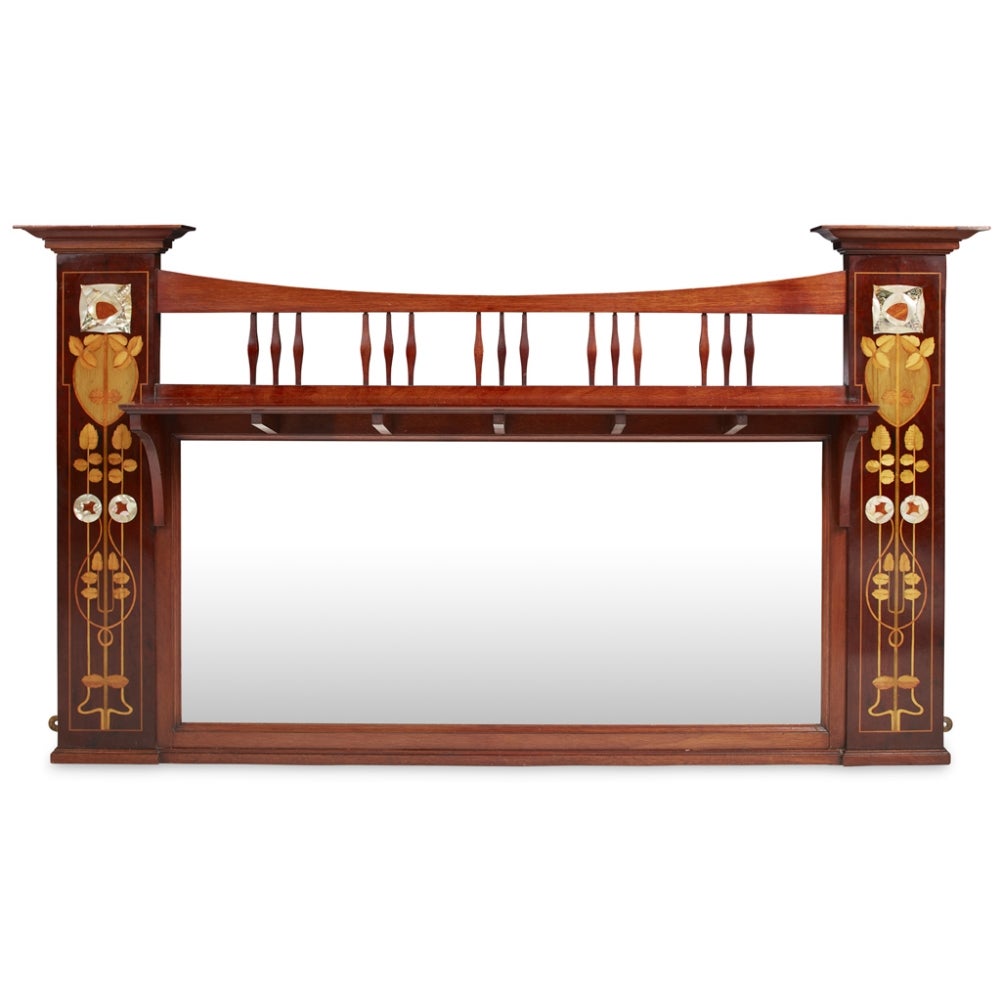
Here is a selection giving an idea of the type of Antiques we specialise in. 1st is a mirror by Shapland & Petter. A Gothic Revival folding fire screen in the style of Morris & Co. A Morris & Co Mahogany wall cabinet designed by George Jack. A Hayrake table designed by G Russell after a design by E Gimson. A Cotswold School Walnut cabinet by E Barnsley & a Bureau Bookcase with large floral hinges attributed to Charles Rennie Mackintosh.
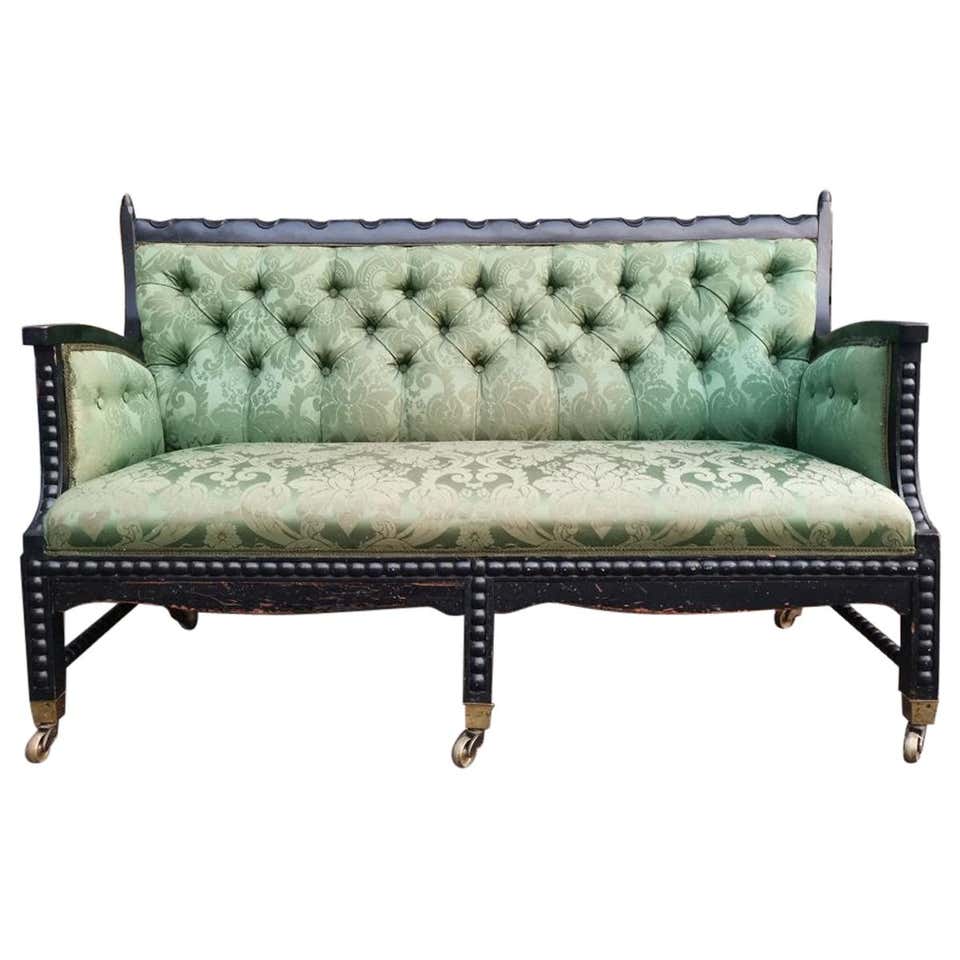
Philip Webb for Morris, Marshall, Faulkner & Co. The firm became Morris & Co in 1875. A rare Arts & Crafts Aesthetic Movement Ebonised Settee This settee was designed to go with the famous bobbin turned adjustable reclining armchair. The recliners were based on a design from an earlier traditional prototype found in an old carpenters workshop in East Sussex. A sketch was sent it to Philip Webb who adapted it for production by 'The Firm'
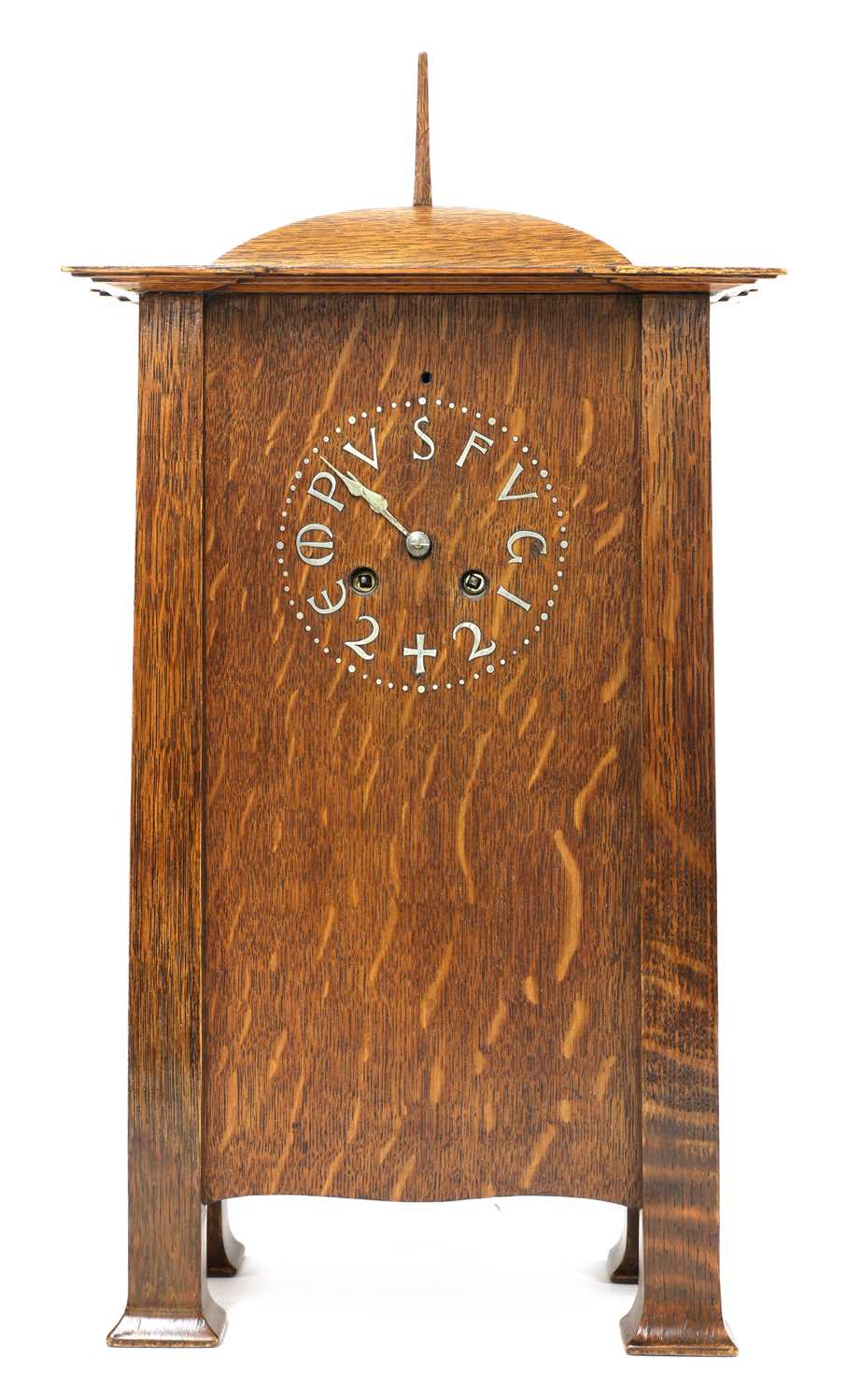
CFA Voysey. Oak Mantle Clock. Of Architectural form, the dome top with a fine spire. The dial inlaid with pewter reads : 'Tempus Fugit' (Time Flies). CFA Voysey first designed a clock of this form for his own home, 'The Orchard' in Chorleywood, in 1895. Two examples in oak are known, and less than a handful were produced in aluminium by W Tingley, one of which was shown at the 1903 Arts and Crafts Exhibition.
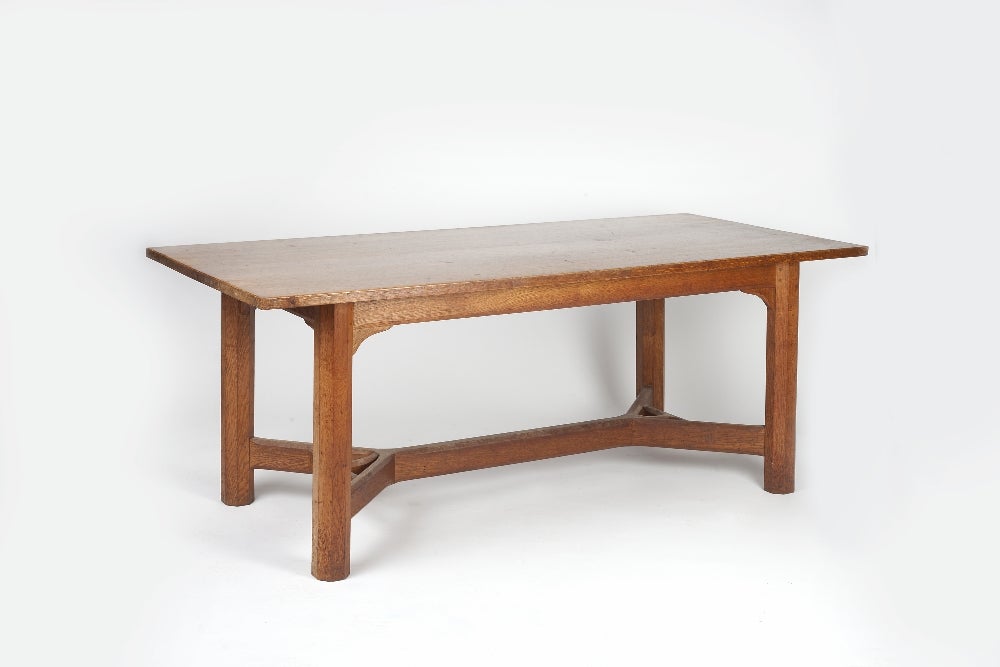
Gordon Russell. A fine quality Arts & Crafts, Cotswold School oak dining table with a hay rake inspired stretcher Stamped 'Gordon Russel Ltd' underneath. This timeless Cotswold school dining table is inspired by the designs of Ernest Gimson and Edward Barnsley with plank top and chunky octagonal legs, united by the 'hay rake' stretcher. The table is pegged at every joint.
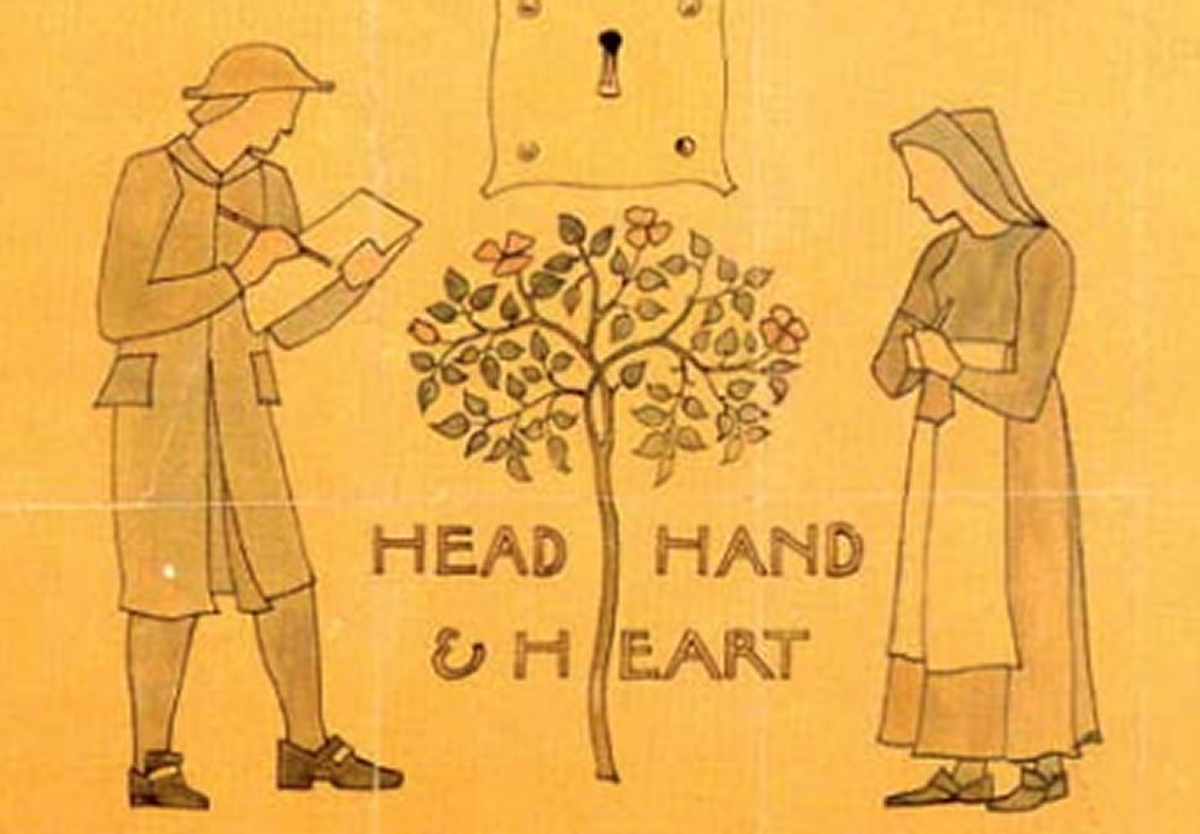
CFA Voysey. Design for a workbox. Head, Hand and Heart. Voysey coined that became the motto for, The Society of Designers in 1896. These three words are the key to understanding the Arts and Crafts Movement because :- Head, for creativity that comes from our imagination and from nature. Hand, for the skill and the time of the craftsman. Heart, for the honesty and the love given to each piece that's made.
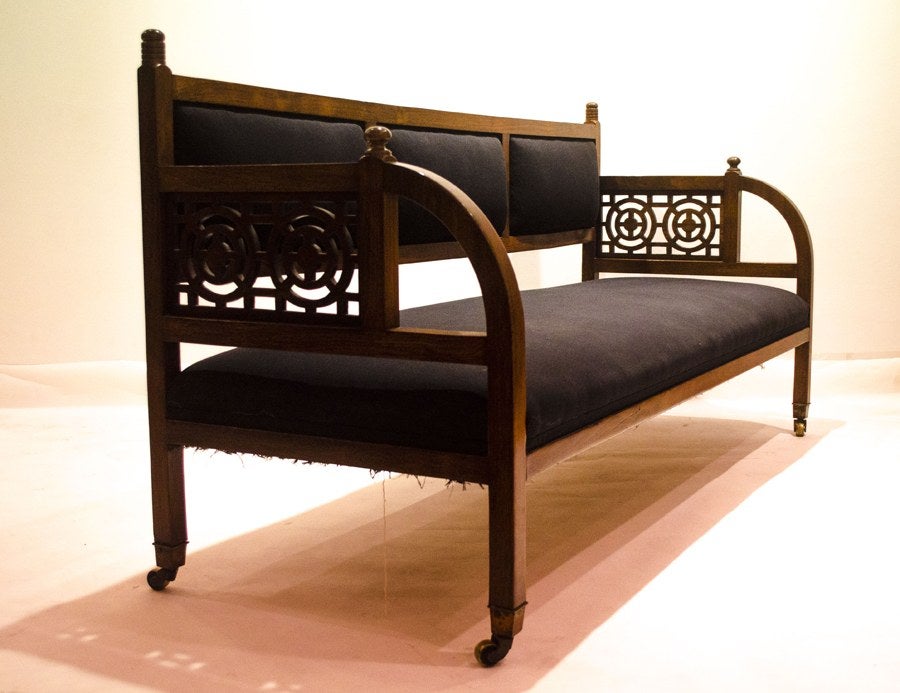
Edward William Godwin. A rare Anglo-Japanese walnut settee originally designed for Dromore Castle, County Limerick, for Lord Limerick. A similar example of the present lot is in the collections of the Victoria & Albert Museum, London & Bristol Museums and Art Gallery, Bristol, UK. Literature: Susan Weber Soros, ed., EW Godwin: Aesthetic Movement Architect & Designer, exh. cat., The Bard Graduate Center for Studies in the Decorative Arts
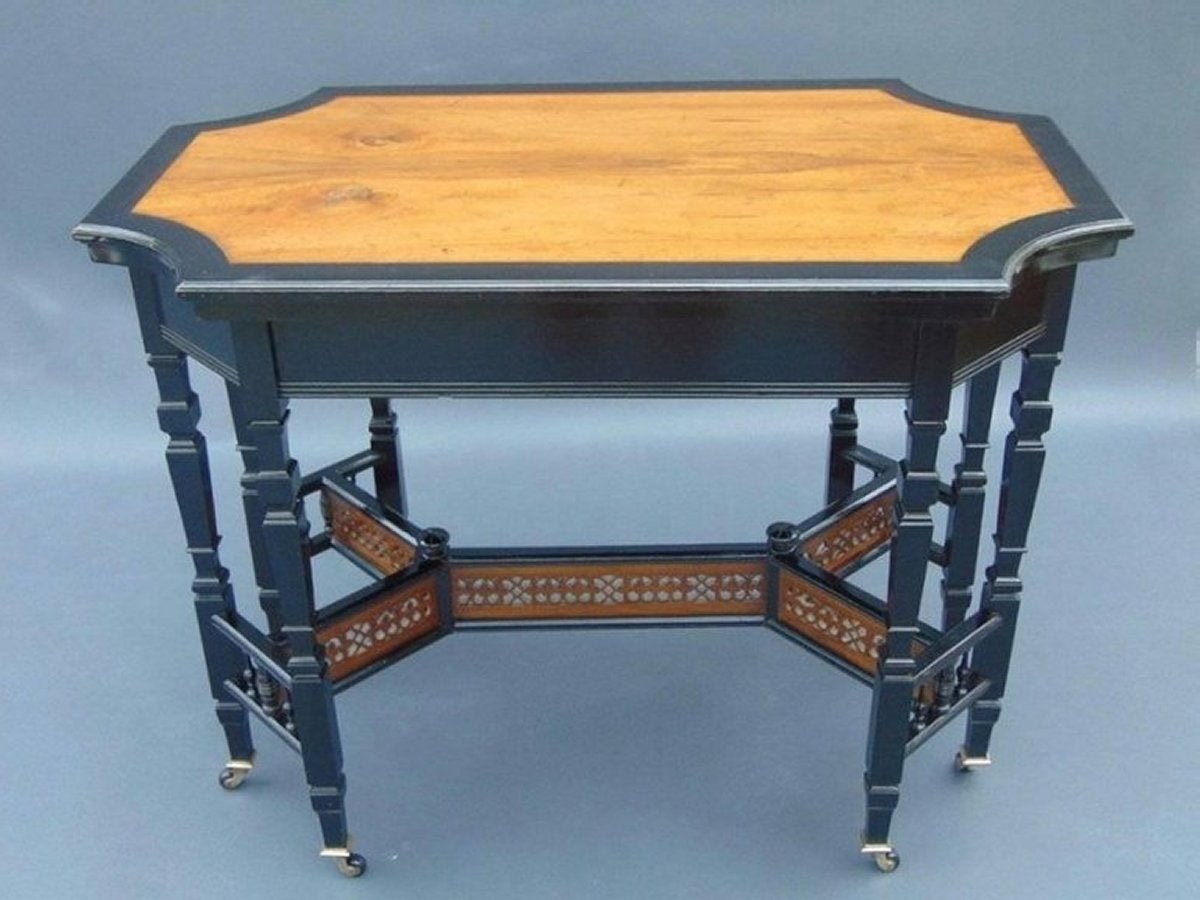
Lambs of Manchester, probably designed by Charles Edward Horton attributed, An Aesthetic Anglo-Japanese ebonised and amboyna centre table with a shaped top, eight legs offset in two pairs to each end, united by a wishbone style stretcher with Fleur De Lys or Prince of Wales feathers fretwork with two carved flat sunflower finials to the top of the centre of the stretcher. The eight legs on original brass and black ceramic castors.
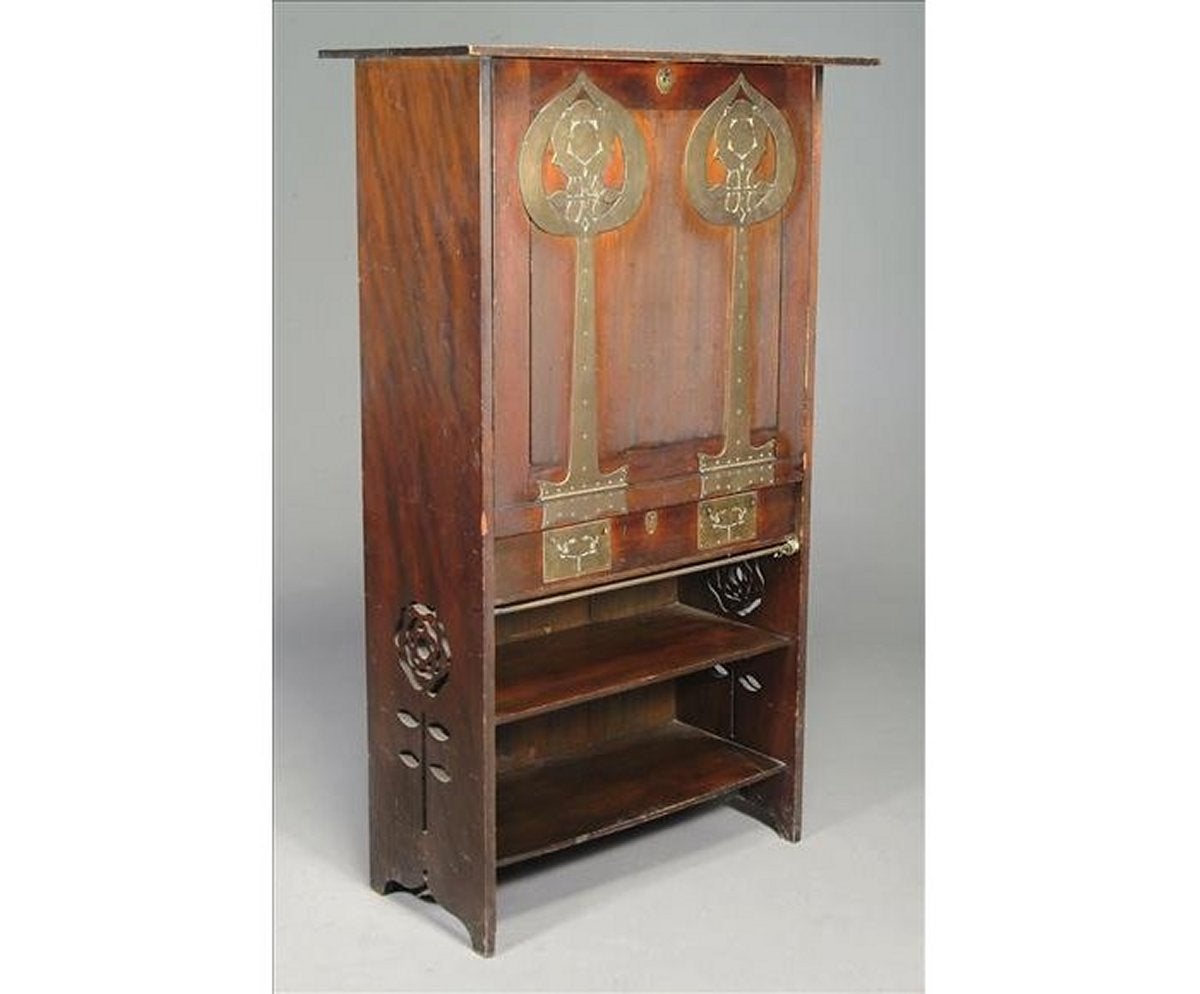
Charles Rennie Mackintosh (1868-1928), a cypress wood and brass writing cabinet, formerly green stained, with large stylized fret work foliate hinges, heart escutcheons and conforming handles to the central drawer. This Writing cabinet is the same style of furniture that Mackintosh designed for John Henderson. For similar see Kaplan, Wendy (editor) 'Charles Rennie Mackintosh', pl. 159. opposite p. 233. See Billcliffe, p. 33, fig. 1895.2
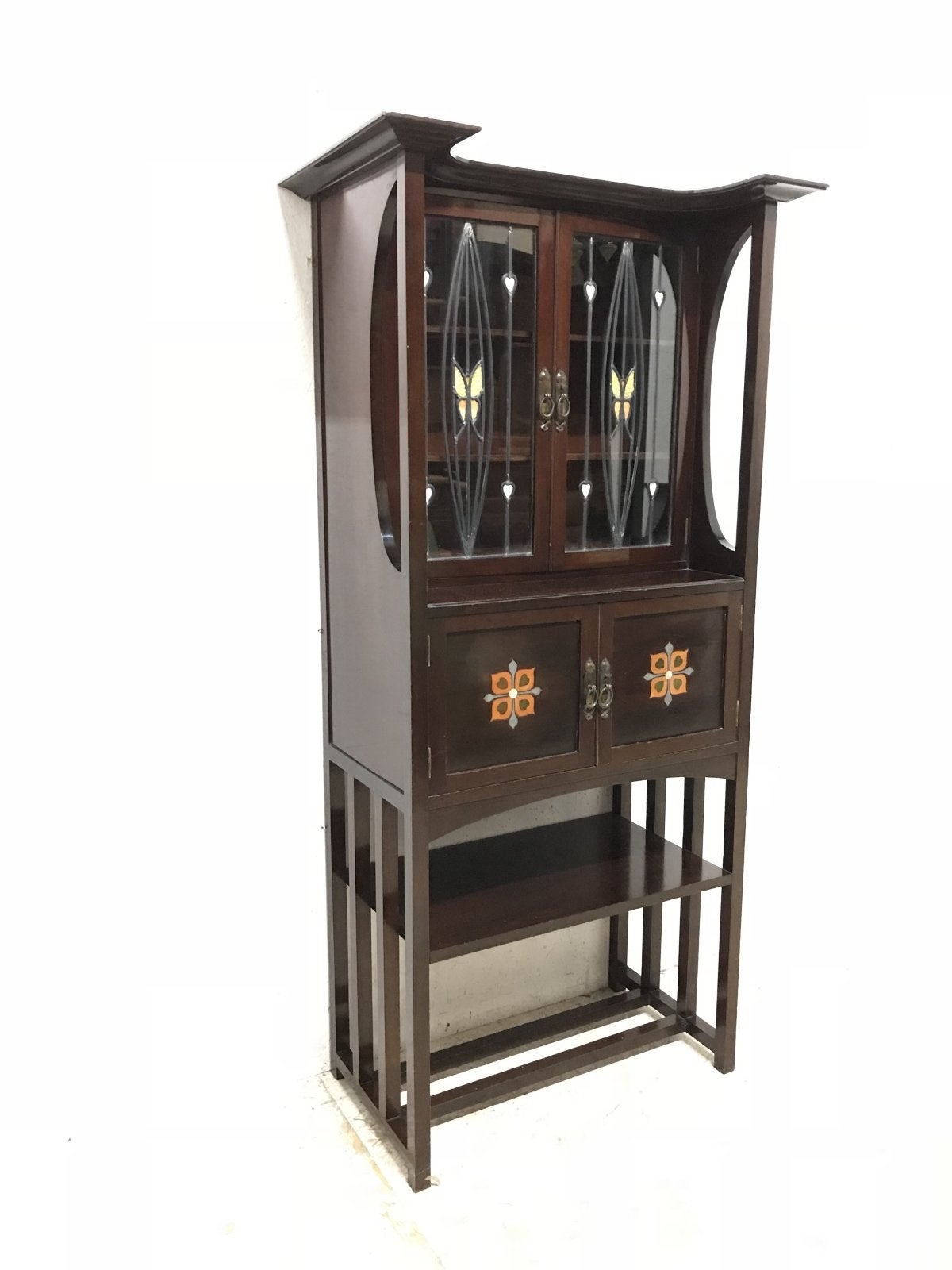
E A Taylor. Display Cabinet made by Wylie & Lochhead for The Glasgow Pavilion Exhibition in 1901. With projecting cornice, square uprights with sweeping details to the sides, glazed upper cabinet with butterfly stained yellow & orange textured glass with pearl white hearts in vertical uprights & copper handles with floral details, the lower cabinet doors with stylised floral mother of pearl, copper, pewter & green stain fruit wood inlay
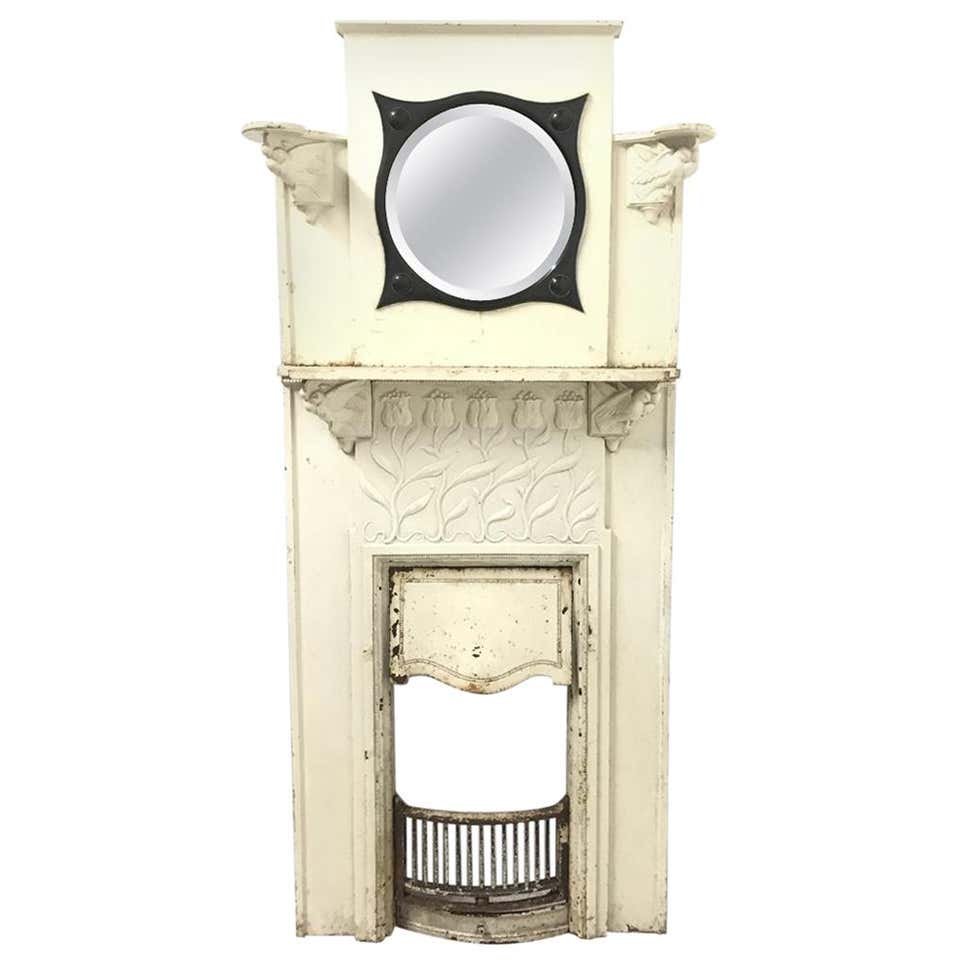
C R Ashbee, attributed. An Arts & Crafts cast iron fireplace, central circular mirror with stylised copper frame overlooked by twin kissing doves with display areas above their heads, wonderful elongated stylised flowers below the mantle and further twin kissing doves to each side. Retaining the original hood, semi-circular ash pan cover and iron back with grate and bars.

